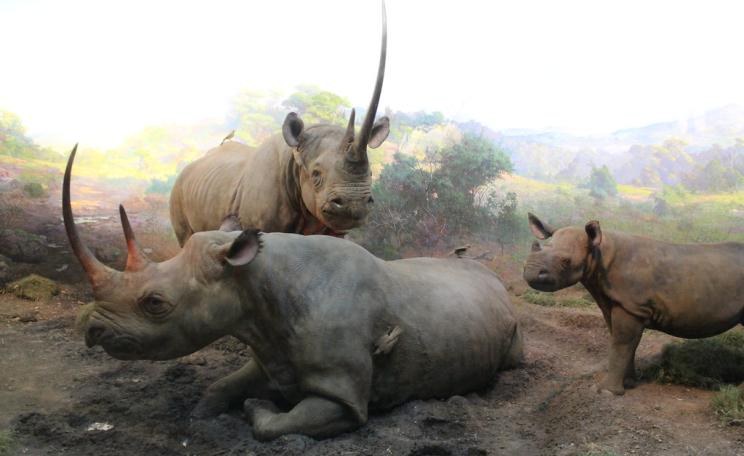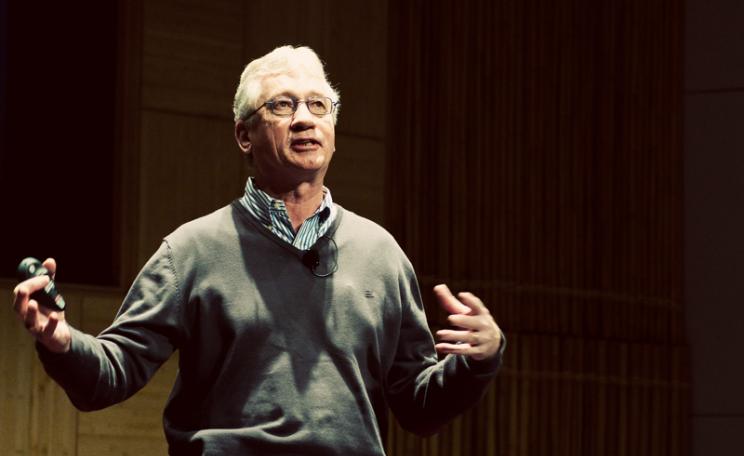The meadows of our future can be noble, rich and verdant if we can come together to make it so.
When I read the news that a gorilla had given birth at Bristol Zoo I was, like most people, rather pleased. I found the tender photos of the mother swaddling her child to be rather moving.
Her lined, inquisitive face peering down at the squalling babe seemed to me a beautiful, quasi-holy sight; a simian Madonna and Child.
It was the sheer humanity of the images which struck me as profound, and from somewhere in the depths of my sentimentality a poignant memory arose.
Infant
I, like many children, used to relish visiting the zoo. When I discovered that my favourite animal, the diminutive and adorable Pygmy Marmoset, was present at London Zoo I made sure to pressurise my parents into scheduling a trip.
When we did eventually go I found that the miniature monkeys with their prickly, russet manes were everything I had hoped for. However, the lasting memory from that trip involved not the delightful marmosets but the gorillas.
At that time I was old enough to know that I belonged to a different order of child than the tiny, blob-like infants that one saw reclining in prams and struggling against leashes.
I had the good fortune to witness one such creature, a rotund and curious girl in pink dungarees, gently press her tiny alabaster hand against a transparent wall at the gorilla enclosure.
A large and adoring crowd soon gathered round her. On the other side of the barrier, looking down at the infant with warm walnut eyes, was the comparatively huge figure of a Western Lowland Gorilla.
Painting
To everyone’s astonishment the gorilla raised her dark, wrinkled palm and spread it carefully across the glass, the child’s tiny hand becoming enclosed within the larger print.
In that moment it seemed that millions of years of divergent evolutionary history dissolved as these two primates reached out to one and other, united by wonder and affection.
As beautiful as it was to see, there was certainly something tragic about it; it felt bittersweet that such a sensitive and intelligent creature as this gorilla could be separated from the reverent crowds by a cold, Perspex barrier of our making.
The memory of those two palms pressed together today evoke in my mind one of the most primeval and stirring images of human identity and expression: the ochre handprints smattered across numerous Palaeolithic caves.
One handprint in Maltravieso cave in Spain has been dated to at least 66,700 years ago, making the stencilled hand, so ubiquitous in kindergarten art classes, the oldest form of painting in the world.
Gap
Yet what is so remarkable about this particular handprint, this primordial attempt to alter the world, to donate a part of one’s self for posterity, is that it was not made by a modern human, but rather by a Neanderthal.
The meadows of our future can be noble, rich and verdant if we can come together to make it so.
This progenitor of Caravaggio, Van Gogh and Picasso had been a member of Homo Stupidus. Such a discovery raises that fundamental question – what makes us human, and is Homo Sapiens Sapiens really all that special?
It would be foolish to ignore the unique aspects of modern humanity – our incomparable technological prowess, our unparalleled intellectual and emotional complexity, our creation of the concept of morality and our subsequent ability to epitomise the extremes of both good and evil.
In this sense human exceptionalism is no myth. Yet since Descartes declared that animals are no more than machines - unthinking, unfeeling automata – our understanding of the planet’s other inhabitants has vastly improved and the gap between ‘us’ and ‘them’ has narrowed.
Even something as lofty as the appreciation of art may not be an exclusively Hominid pastime.
Anthropomorphising
The paintings of the captive chimp Congo aren’t half bad and would probably invite substantial deconstruction from any number of beret-donning dilettantes.
Certain primates can participate in highly advanced forms of communication, up to a level of that of a human toddler– Koko the gorilla’s knowledge and use of signing being a famous example.
Indeed, although applied first by Dutch colonists rather than the indigenous Malay people, it is well-known that the word orangutan means ‘man of the forest’.
Perhaps our nearest and dearest relatives deserve the recognition of being more man than beast, as Peter Singer’s credible Great Ape Project seeks to achieve through the granting basic human rights to these creatures.
Even concepts which once seemed hopelessly anthropomorphising can be applied to various animals supported by wads of scientific literature.
Happiness
Animals certainly have different personalities: anyone with experience of a couple of household pets can tell you that.
Yet the study of pigs has shown that they have personality traits similar to human ones; exploration, aggression, sociability are all psychological dimensions we share with these creatures.
We call animals ‘it’ but this seems entirely unjustified – as individuals possessing distinct psychologies ‘he’, ‘she’ and 'they' seem much more fitting.
Yet the most essential trait which we share with members of the animal kingdom is our possession of preferences.
We all desire, as the US constitution so famously puts it, ‘life, liberty and the pursuit of happiness’.
Spectrum
This may seem like an absurd consideration to extend to animals, as if venerable cows and chickens could have been in that Philadelphia state house, nodding solemnly at Jefferson’s phrasing.
Yet animals do desire to live, they do desire liberty from entrapment and suffering, and they do pursue pleasures, no matter how base we consider them, that contribute to their happiness.
The fact that human beings are exceptional in some ways does not justify our wanton cruelty and supremacy over animals or our destruction of their desires.
Long have we imagined ourselves different to animals, above animals, better than animals. But, of course, we are animals.
We sit only at the high end of a spectrum of many various and related beings.
Reflection
Where we once thought modern humans were unique, in our artistry, language, individuated personalities, emotions and desires, we are progressively finding that we share more and more of these traits with other creatures.
We may be unique, but this is no legitimate reason for us to abuse and enslave our fellow animals, beings which are our genetic forebears and who make up our extended family.
The vaunting of our uniqueness has bred an arrogance that has resulted in immeasurable pain for not just the animal kingdom but for our planet as a whole.
“You and me baby ain’t nothing but mammals,” the Bloodhound Gang once said, and they were right.
Once we can acknowledge that fact we may be able to move forward in liberating our fellow creatures and soothing the many sores we have branded onto our aching Earth.
The meadows of our future can be noble, rich and verdant if we can come together to make it so.
All we need do is look past the Perspex at the chicken, cow, pig or primate; to look into their subtle eyes and see not the vapid stare of a beast but a reflection of ourselves.
This Author
Matthew Chalmers is a freelance journalist and writes for the vegan magazine, The Liberator.




